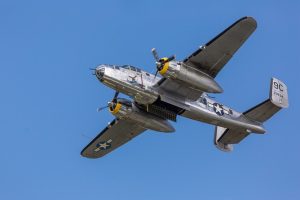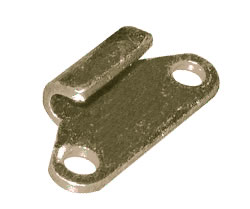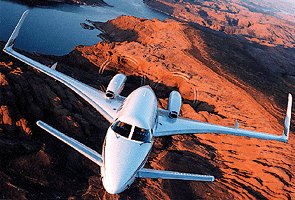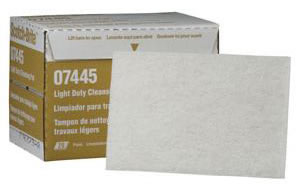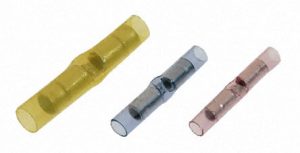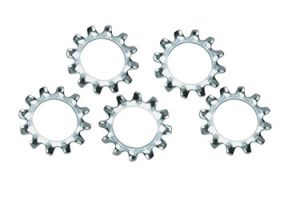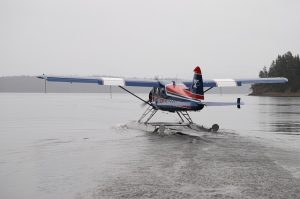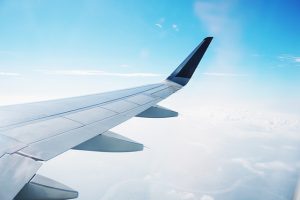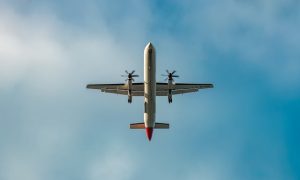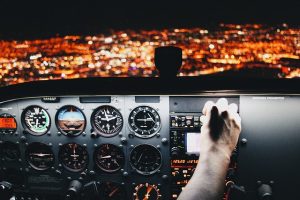
The throttle is one of the most important control mechanisms in an airplane. Also known as a throttle lever, it allows pilots to adjust the engine power. Pilots can increase or decrease an engine’s power by pushing or pulling the throttle. For a better understanding of the throttle and how it works, keep reading.
Overview of the Throttle
The throttle lever or “throttle” is an aircraft control mechanism that controls the power output of an airplane’s engines. Most airplanes have a single throttle lever per engine. An airplane with two engines, for instance, will typically have two throttle levers, whereas a four-engine airplane will have four throttle levers.
Pilots can adjust the power output of an engine via the appropriate throttle lever. Pushing the throttle lever forward will increase the engine’s power output. Pulling the throttle lever back, on the other hand, will decrease the engine’s power output.
How the Throttle Works
How does pushing or pulling the throttle translate into increased or decreased power output exactly? For airplanes with carburetted engines, the throttle lever controls the amount of fuel and air that enters the engine’s combustion chamber. Carburetted engines rely on a mixture of air and fuel, which they burn to generate power. Pushing the throttle lever forward will force more air and fuel into the engine’s combustion chamber, resulting in greater power output.
Some airplanes are equipped with a fuel injection system. Fuel injection systems are designed to spray fuel into the engine’s cylinders. For airplanes with a fuel injection system, the throttle lever controls this spraying or injection action. Pushing the throttle lever forward will spray more fuel into the engine’s cylinders.
Effects of the Throttle
When you push or pull the throttle lever, you’ll change the power output of the respective engine. The throttle is the main control mechanism for engine power output. When piloting an airplane, you can use it to speed up or slow down the airplane.
The throttle, however, affects more than just the speed of an airplane; it affects the airplane’s fuel efficiency as well. Keeping the throttle pushed all or most of the way forward, for instance, will result in faster fuel consumption. To avoid wasting fuel, pilots must find a balance that allows for ample power output without consuming an excess amount of fuel.
Some airplanes, of course, have a propeller. For propeller airplanes, the throttle lever controls the speed at which the propeller turns. Pushing the throttle lever forward will increase the propeller’s RPM and, thus, increase the airplane’s speed.
- SEO Powered Content & PR Distribution. Get Amplified Today.
- PlatoData.Network Vertical Generative Ai. Empower Yourself. Access Here.
- PlatoAiStream. Web3 Intelligence. Knowledge Amplified. Access Here.
- PlatoESG. Carbon, CleanTech, Energy, Environment, Solar, Waste Management. Access Here.
- PlatoHealth. Biotech and Clinical Trials Intelligence. Access Here.
- Source: https://monroeaerospace.com/blog/understanding-the-throttle-and-how-it-works/
- :is
- $UP
- 200
- 300
- a
- Action
- adjust
- affects
- AIR
- aircraft
- Airplane
- Airplanes
- All
- allows
- also
- amount
- an
- and
- appropriate
- ARE
- AS
- At
- avoid
- back
- Balance
- Better
- burn
- by
- CAN
- Chamber
- change
- Cockpit
- consuming
- consumption
- control
- controls
- course
- decrease
- decreased
- designed
- does
- down
- efficiency
- Engine
- Engines
- Enters
- equipped
- exactly
- excess
- faster
- Find
- For
- Force
- Forward
- four
- Fuel
- fuel efficiency
- generate
- greater
- hand
- Have
- High
- How
- However
- HTTPS
- important
- in
- Increase
- increased
- instance
- into
- IT
- jpg
- just
- Keep
- keeping
- known
- lever
- Main
- max-width
- mechanism
- mechanisms
- mixture
- more
- most
- must
- of
- on
- ONE
- or
- Other
- output
- per
- piloting
- Pilots
- plato
- Plato Data Intelligence
- PlatoData
- power
- pulling
- Push
- pushed
- Pushing
- Reading
- rely
- respective
- result
- resulting
- single
- slow
- speed
- system
- Systems
- than
- that
- The
- they
- this
- Thus
- to
- translate
- turns
- two
- typically
- understanding
- use
- via
- Way..
- WELL
- when
- whereas
- which
- will
- with
- without
- works
- you
- zephyrnet

